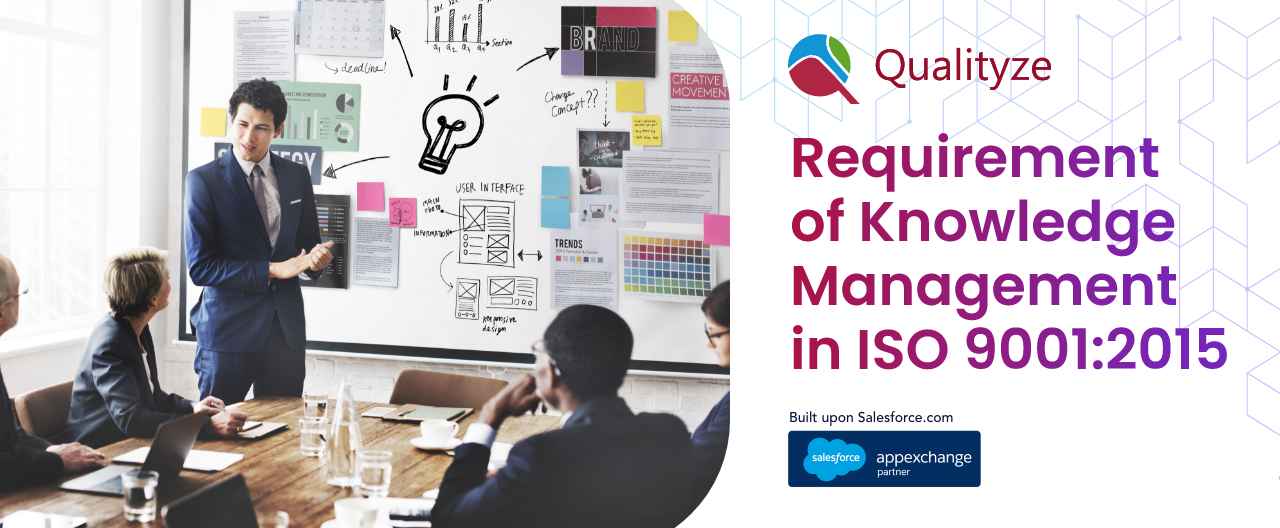Calculate your potential savings with our ROI Calculator
ROI CalculatorCalculate your potential savings with our ROI Calculator
ROI Calculator
This blog refers to ISO 9001:2015 Clause 7.1.6 “Organizational knowledge” and is specifically in relevance to organizations seeking to implement or update to the latest version of ISO 9001:2015 along with anyone thinking about implementing the international standard.
“You know more than you can tell”
Albert Einstein’s research assistant Michael Polanyi outlined a fine distinction between tacit and explicit knowledge through the above sentence. And so has the ISO organization through this revised version of ISO 9001:2015.
This is the first time that ISO has taken cognizance of knowledge as a ‘resource’ by publishing it in an international standard and specifying its management.
In fact, the clause 7.1.6 in ISO 9001:2015 looks to be the only clause that is completely new as compared to other changed requirements which all have equivalents in the earlier version.
Though clause 7.1.6 doesn’t specifically require any documented information on organizational knowledge; however elements of a formal knowledge management in iso 9001:2015 are incorporated in it and due emphasis is given on ‘tacit’ knowledge which is gained with experience but may not be addressed merely through control of documentation.
ISO 9001:2015 expects organizations to determine their ‘needed’ knowledge in the contextual conditions, be made available to all concerned, preserved and protected along with acquiring new knowledge for operation of its processes and ensure conformity of the process outputs.
The revised standard talks about Explicit knowledge (which is open and easy to express) and the Tacit knowledge (which is generally silent and difficult to express).
For example, the explicit knowledge in terms of documented Work Instructions or Procedures will be easier for you to derive, made available or convey further. However, extracting the full ‘Tacit’ knowledge of an experienced soccer player who never missed a penalty shot is comparatively difficult such as to extract his 100% soccer skills and then build the same level proficiency for other players by transferring his unique anticipation skills.
Also, tacit knowledge is more difficult to manage as compared to explicit knowledge.
One of the key challenges organizations faced today is they do not know what specific kinds of knowledge individuals know therefore, they keep reinventing the wheels.
Hence, the need for “knowing what we know” is becoming more important in today’s competitive environment.
A fine example can be taken of the Dutch technology company Philips who introduced the concept of “Yellow Pages” listing of domain experts on its intranet where one can just type the specific domain and within seconds the system will fetch you the domain experts in Philips across the globe who has the expertise on the queried topic.
Another example of ISO 9001:2015 knowledge management practices can be learned from automotive majors such as Volkswagen and Toyota who promote mass level internal employee exchange policies for longer duration training in existing factories before commissioning the new assembly line to ensure finely tuned production systems in the new facilities.
However, be mindful that the ‘need’ for knowledge management in ISO 9001:2015 varies under contextual conditions of an organization such as its scope, industry and other influencing factors hence the QMS implementers and the auditors can narrow down their choices and approach in their respective areas in consideration with the context of the organization.
So, to comply with this new requirement of organizational knowledge in ISO 9001:2015 revised standard, the organizations can formulate its knowledge management framework with below in mind:
Finally, another important fact to bear in mind is that one should not restrict itself to clause 7.1.6 for management of knowledge but its implications to clause 7.2 should also be taken into consideration which talks about organizational competence.
It pays to remember that the new standard has focused on ‘effectiveness’ of the actions taken for competency development such as training and retaining of such records for evidence purpose.
With inclusion of Knowledge Management in the internationals standard, it is evident that intellectual resources are a key organizational asset that enable a sustainable, competitive advantage for all types of industries and therefore requires a systemic approach.
To discover more about Qualityze EQMS solutions,
Request a demo:
Phone: +1-877-207-8616
e-mail: info@qualityze.com